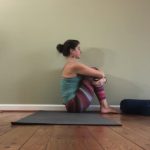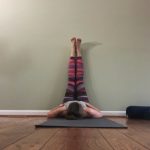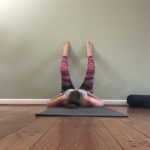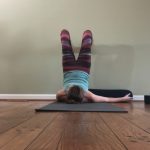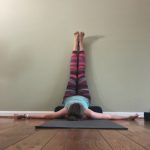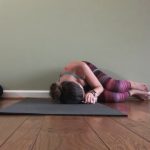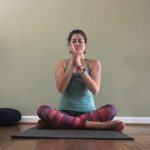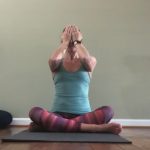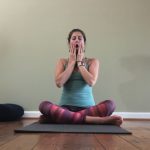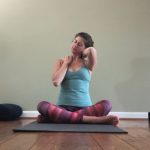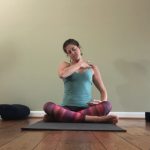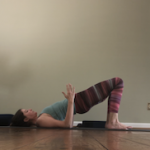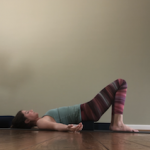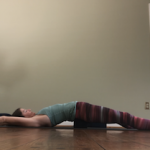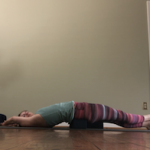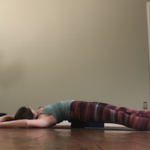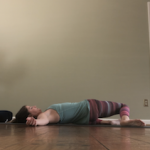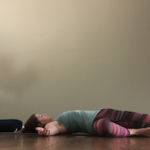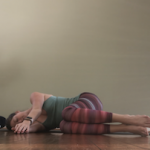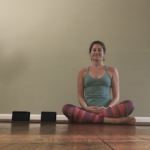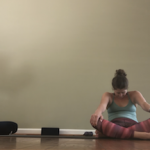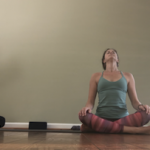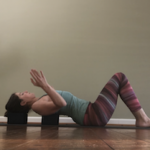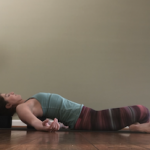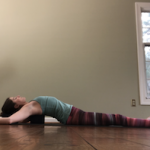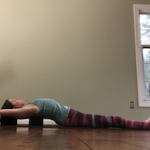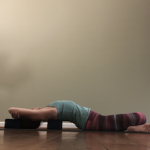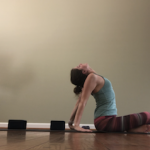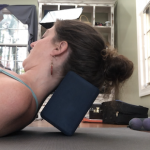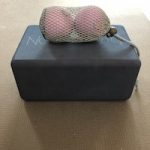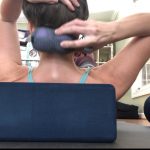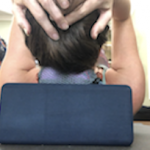Grounding Yin Practice for the Lungs and Heart
This sweet sequence is a wonderful addition to your Fall practice rotation. Targeting the heart and lung channels this sequence of yin asana will open up your breath capacity, clear stagnant energy in the front and side lines of the body and uncover a gentle sense of joy . Beginning and ending with grounding and steadying poses this practice is the perfect blend of opening and rest.
What you’ll need: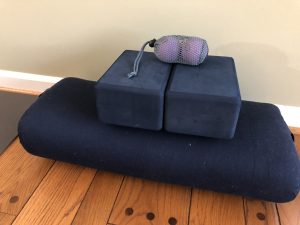
2 blocks
1 firm pillow or yoga bolster or several firm blankets rolled together
2 tennis balls tied into a tube sock or a set of regular yoga-tuneup balls in the mesh pouch *optional
Waterfall – 10 minutes
sit with your shoulder and hip against the wall. Slowly bring your shoulders down to the floor and stretch your legs up the wall. Pause for a moment to observe the weight of your sacrum and the sensation of grounding in your lower back. To make this more of an inversion and to clear stagnant energy and fluid from the legs and hips you may elevate your hips on to a blanket, pillow or bolster as shown. Make sure your tail bone is supported and you can relax into the support of the props.
Take a few deep breaths allowing the inhale to travel down your legs and spine and the exhale to wash out the back of your chest and skull…then take rest in the witness state.
Palming 3-5 minutes
Sitting up slowly take a moment to observe the effects of your opening posture. If you haven’t already state your intention for practice here. Your intention should be related to you, positive in nature, and stated in the present tense.
When you feel settled in your new seat, bring your hands to your heart and rub them together vigorously to create warmth. When your hands are warm place them on your eyes, allow the heat to travel through your eyes into your brain then letting gravity draw your arms down let your hands slide down your face, releasing the jaw hinge gently…go exploring from here. It may feel nice to offer your neck , shoulders, or scalp a kind and loving massage. You may also explore the pressure points along the underside of your collar bones out towards your inner shoulder heads.
Supported bridge – 3-5 minutes
From here finding a firm pillow or yoga block lie back on to the floor with your knees bent. Slowly peel your hips off the floor and slide the block or pillow to the lowest height allowable under your sacrum, again making sure your tailbone is supported. Start with your feet to the floor and your knees bent. As your body softens with the rise and fall of your breath you may choose to extend your legs and arms out along the mat stretching long from finger to toe tips and the relaxing your arms and lets wide as shown.
Supported bridge + Bananasana – 2-3 minutes each side
Now maintaining the above shape begin to walk your legs over to the Right side of your mat. To keep your legs steady it is often helpful to cross your left ankle over your right as you arrive. If this feels easeful and you feel called to deepen the stretch through your side body you may walk your chest and arms over the the right side of your mat as well. Option to interlace your hands behind your head or to hold your left wrist with your right hand and lengthen through your left arm. If this presents pain or strain in your lower back do this pose without the support of the block (lying instead on the floor).
Come back to center after side one. Observe the effect then repeat on the Left Side.
After completing side 2 remove the block and lie back in savasana to observe the effects.
Gentle windshield wiper twist
With your mat clear and your knees bent take your feet as wide on the mat as your outer hips. With your arms wide allow your knees to sway slowly side to side. You may move with your breath or settle into a twist on each side for a minute each, or as long as you need. Here I have my knees moving towards the arch of the opposite foot in the twist to release my outer hip but you may take any twist of your liking.
Heart Bridge with Cactus Arms– 5 minutes
Now rolling towards your side take a moment before rising to sit. You may repeat the palming exercise from before, take a few breaths to move through your spine in a seated cat cow or move directly into the next shape…
Taking two blocks or firmly folded blankets place one block/blanket directly beneath your shoulder blades on the lowest or middle setting. Make sure the bottom wing tips of your scapula are on the block and not to the sides. Next take the second block at the same height under the back of your head so that your head and heart are in line and parallel to the floor. Allow your arms to open to the sides like 1/2 open wings with the palms up. Your legs can be extended or for an extra opening in your hips and inner groin cross the center of your shins like you are sitting crosslegged. Make sure your shins cross at the center so your feet are close to opposite knees. Switch the crossing of your legs half way through.
As you rest visualize the buoyancy of your inhale floating your spine effortlessly upward towards the front of your chest and as you exhale watch the weight of your spine settle once more towards the back of your body…like a feather floating on the wind.
To release the pose bend your knees and place your feet the the floor. You may choose to roll towards one side or press in to your hands and roll your way up to sit.
Remove the props from your mat and then lie back in savasana to reflect.
Gentle windshield wiper twist
With your mat clear and your knees bent take your feet as wide on the mat as your outer hips. With your arms wide allow your knees to sway slowly side to side. You may move with your breath or settle into a twist on each side for a minute each, or as long as you need. Here I have my knees moving towards the arch of the opposite foot in the twist to release my outer hip but you may take any twist of your liking.
Peace Button – 5 minutes
This is my favorite way to end a grounding practice. The peace button is how I refer to the base of the skull where the head attaches to the neck. The head is heavy and with the increasing cultural propensity towards forward head posture this area gets so overworked and tight! It is the proverbial “pain in the neck!” Gently applying pressure to that point releases that tension in a big way! See how this feels
If you don’t have tennis balls take your block on the medium setting under your head, rest the beveled edge of the block under the occipital ridge of the skull and find a position where the head can relax into this pressure. You may rock your head side to side slowly massaging the tension away. Stay present to sensations maybe this spot feels warm or dense…notice how this changes as you release your jaw, relax your brow and soften into the pressure points.
To better target each spot you may use a set of tuneup balls (as shown here) OR two tennis balls tied into a tube sock. Place them on top of the block at the lowest setting and then place each side of this ridge onto one ball. Repeat the same rocking and resting massage as before.
To come out remove the balls, take the block away and lie back feeling the place your skull and chest touch the floor getting heavy and spacious.
Supported Final Rest – 5-10 minutes
For final rest you may lie flat on your back or to ground your lower back more and release any residual tension place a firm pillow or bolster under your thighs and knees. If your body temperature has dropped place a blanket over your body. Let your mind settle at the center of your chest as you release the breath.
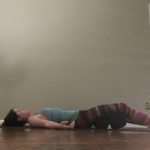
Aham Prema Meditation 5-10 minutes –
After rising from final resting pose sit comfortably. It may be helpful to elevate your hips on a pillow or sit with your back against the wall or a chair for support. As you settle and with the natural ebb and flow of your breathing (no manipulation or control) observe your Inhale and follow your breath in silently repeating “a-humm”….as you follow your Exhale silently repeat “Pray-maa” Continue for 5-10 minutes. Aham Prema is the mantra recognizing the source of divine love within.
Close your practice by returning to your intention and offering up a prayer of gratitude.
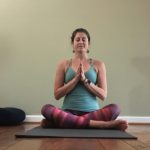
Allow the benefits of your practice to unfold as you move throughout your day. Stay hydrated with the gift of clean fresh water, take time for deep spacious breaths, and eat nourishing food.
Namaste,
Jennifer

